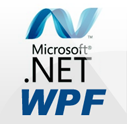
"Microsoft WPF(Windows presentation foundation) is the engine that is responsible for creating, displaying and manipulating user-interfaces, documents, images, movies and media in Rich UI Windows Applications.”
In this WPF training course, developers who know the basics of Windows Forms development gain more advanced Windows Client design and development skills. The WPF training course provides a series of walk-throughs & lab assignments which introduce and explain all the features of WPF in easiest way for a beginner to understand. This WPF online course is very useful for writing MCTS Exam 70-511(Windows Applications Development with Microsoft .NET Framework 4.0) as the WPF tutorial also improves the skills of a student in examination point of view.
XBAP Application